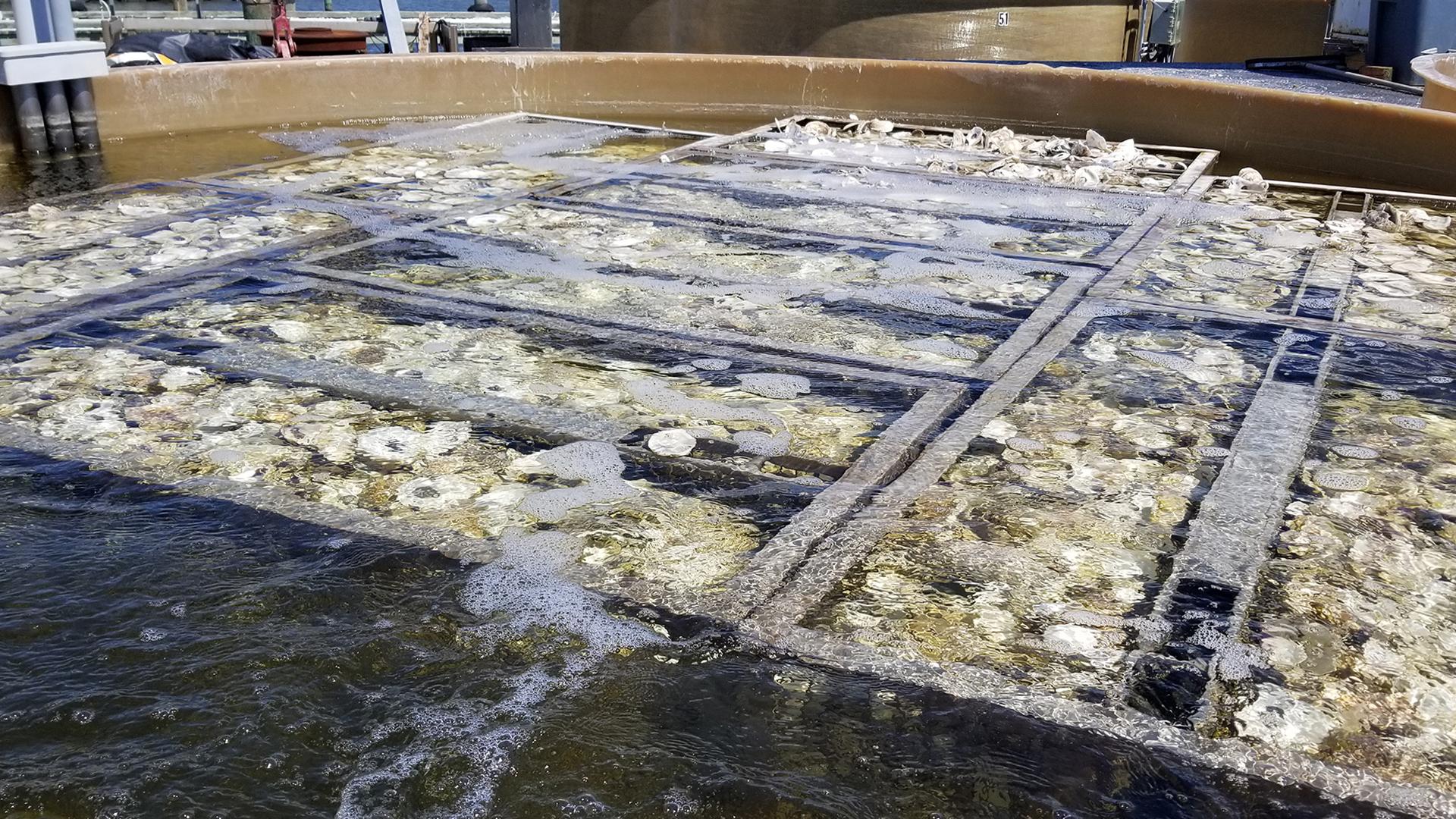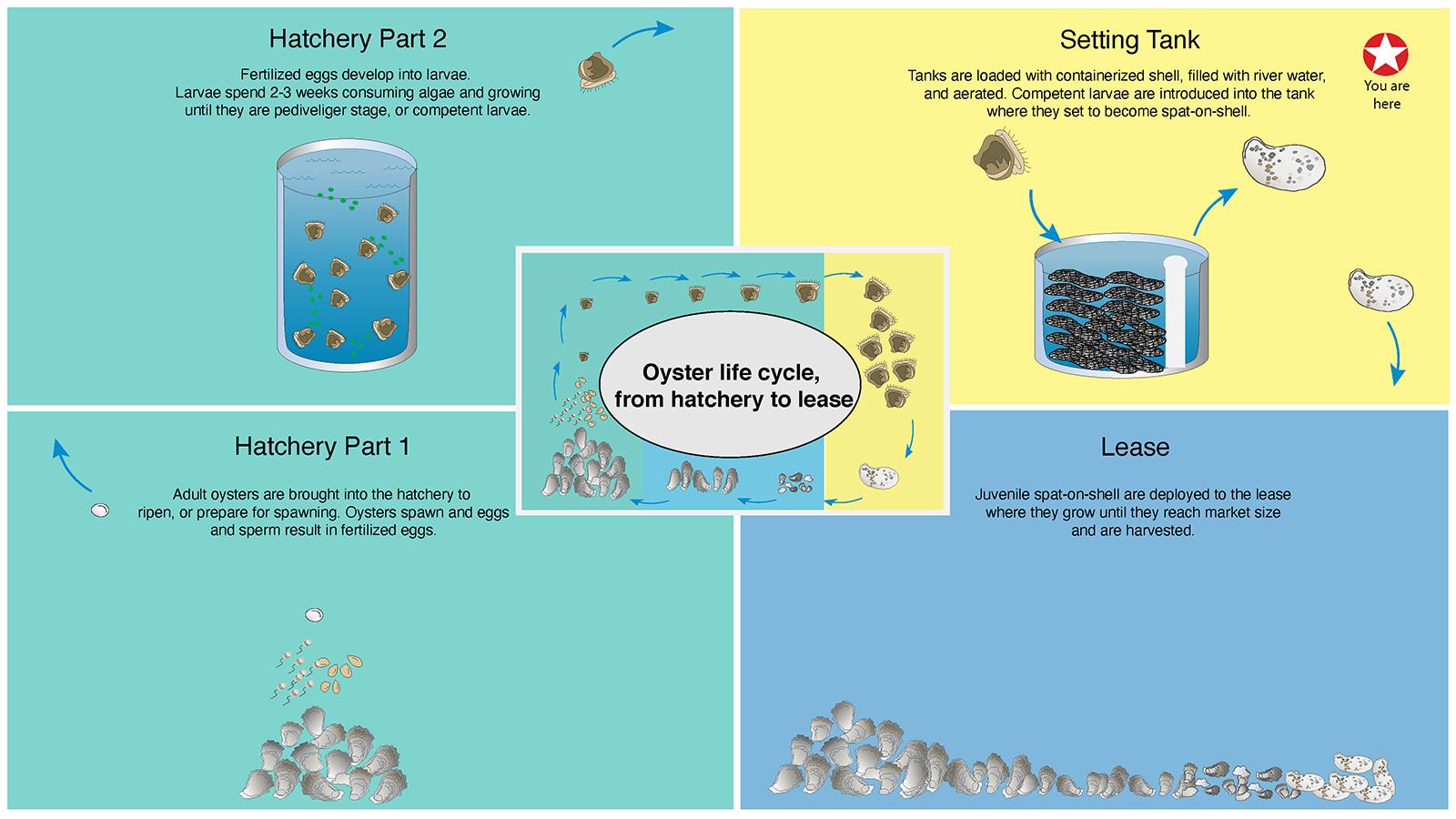The Eastern Oyster (Crassostrea virginica) life cycle begins with spawning of adult oysters. Fertilized eggs develop over a period of 2 - 3 weeks, while consuming suitable algae. Mature larvae are known as pediveliger larvae. These mature larvae search for suitable substrate and set there permanently, transitioning from a free swimming larvae to a sessile spat. Spat grow and the spawning process begins again the following year.


Hatcheries have gained a detailed understanding of the oyster life cycle and critical components. They can manipulate conditions during certain periods of the oyster life cycle to extend their spawning season well beyond a natural spawning season, and they can augment production by providing highly suitable food and other conditions to maximize efficiency and production.

Broodstock selection is the first major component of a hatchery. Hatcheries can produce larvae using natural oysters sourced from local waterways,. They can also use oysters which have been selectively bred for desirable characteristics, such as fast growth and resilience to oyster diseases or low salinity events. Hatcheries can also produce triploid oysters, which do not naturally spawn, resulting in an oyster with more consistent meat quality throughout the year.
After a hatchery selects their broodstock, the broodstock are allowed to ripen, or develop gonad for spawning. When broodstock oysters are ready for spawning, the eggs and sperm are collected, resulting in fertilized eggs.
Fertilized eggs enter swimming tanks, filled with filtered seawater and maintained at suitable temperatures for larval development. Developing larvae are provided with phytoplankton and permitted to swim and grow for a period of 2 - 3 weeks
When larvae mature, they are harvested and removed from the swimming tank. At this point, they are ready for settlement, either in a downweller (for Contained Aquaculture) or in a remote setting system (for Bottom Aquaculture).
There are a number of hatcheries in the state of Maryland and along the East Coast, which supply Crassostrea virginica larvae and / or juvenile spat. Importation permits are generally required by state management agencies prior to importing out-of-state larvae or juvenile spat. Consult local state agencies prior to ordering larvae or spat from another state